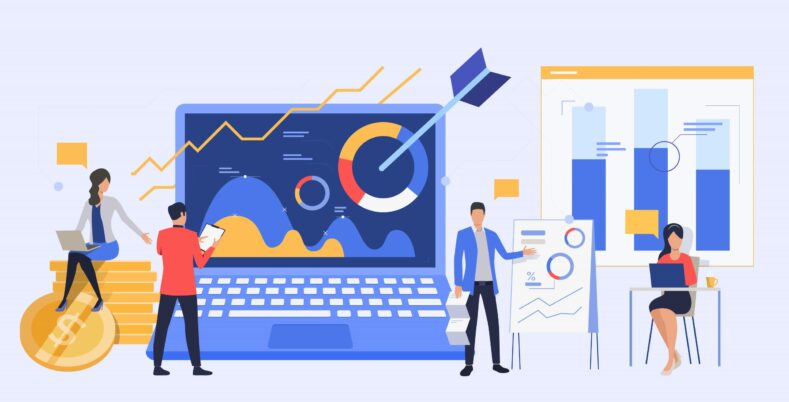In 2017, The Economist described data as the world’s most valuable resource, even more valuable than oil. While this might have seemed exaggerated at the time, it has become a reality today, with data centers holding some of the planet’s most valuable information. Data not only fuels digital systems worldwide but also plays a crucial role in determining a business’s success. For businesses today, data is indispensable, providing insights into everything from the viability of a business plan to customer preferences. With most businesses having a digital presence, they rely on data from various sources to analyze and optimize marketing efforts, ultimately enhancing customer service through data-driven personalization.
There are different sources from which a business gathers data for its activities. These can be broadly divided into three separate categories: first-party data, second-party, and third-party data. Let us understand how each of these categories differs:
First-party data: Data that businesses obtain directly from their customers.
Second-party data: Data that two businesses collect and share with each other.
Third-party data: Data collected by a single entity and sold to different businesses (e.g., Google).
Out of these three sources, the most reliable is first-party data. There will always be a sense of doubt when businesses use second- and third-party data, as it may not always provide accurate information. However, first-party data is something businesses can fully trust since they are directly involved in obtaining it from their customers or potential customers.
Why is gathering first-party data so important?
There are many reasons behind the importance of gathering first-party data, with one being the push toward a cookie-less world, which is changing the scope of digital advertising. When the world’s biggest search engine, Google, announced its plans to move away from cookies, which are primarily used to capture third-party data, it signaled that brands would have to build their own reliable databases. Privacy and security concerns are driving the shift away from third-party data, a welcome change considering the numerous data breaches that have affected millions worldwide.
One drawback of not using third-party data is that conducting competitive analysis will be more challenging, as brands will no longer have access to data from the same sources as their competitors. However, there are several benefits to relying on first-party data, especially when it comes to data-driven personalization, which allows brands to tailor content more effectively for each customer. This makes it even more important for brands to start building their own first-party databases.
How can brands gather first-party data?
Brands can gather first-party data through several key touchpoints in their interactions with customers. Website or app analytics provide insights into user behavior, tracking data points such as demographics, location, page views, clicks, purchases, and time spent on the site. Email marketing lists offer valuable subscriber information from campaigns, newsletters, and other email interactions. Customer relationship management (CRM) systems store essential data like customer profiles, purchase history, and customer service records. Social media accounts also serve as a source for gathering data from user interactions and engagements. Additionally, surveys offer direct feedback, capturing demographic details and contact information. Customer feedback, whether collected through online chat, product reviews, or other channels, further enriches a brand’s first-party data pool.
How can brands use first-party data for personalization?
Once data starts flowing in through these various sources, it becomes a valuable asset since brands have a direct connection with their customers or potential customers. Additionally, no one else has access to this data, giving businesses an advantage in a highly competitive market. With such an edge, let’s explore how brands can leverage first-party data for data-driven personalization in their marketing communications:
Segmentation and Targeting
Organizing data after it is collected is crucial. This process helps brands identify key data points to segment their customers into different groups, such as by age, gender, location, or buying patterns. Proper segmentation allows brands to craft distinct buyer personas, incorporating behavior and attributes. With correctly segmented data, brands can concentrate their marketing efforts and tailor personalized messaging for each group. First-party data simplifies identifying customer preferences, ensuring marketing spends are optimized for maximum impact.
Customer Retention
Brands can use first-party data to boost customer retention by delivering personalized experiences based on individual preferences. By analyzing purchase history and behavior, companies can offer targeted recommendations and incentives that keep customers engaged. For example, a fashion retailer might send personalized notifications about similar or complementary items based on a customer’s previous purchases, encouraging repeat business and fostering loyalty.
Cross-Selling and Upselling
First-party data is invaluable for identifying opportunities to cross-sell and upsell. By analyzing customer preferences and behaviors, brands can recommend related products or premium versions of items they’ve already purchased. For instance, an electronics retailer could suggest accessories for a recently purchased smartphone or promote a higher-end model based on the customer’s browsing history.
Optimizing Ad and Email Marketing
Personalization in ad and email marketing becomes more effective when driven by first-party data. By understanding customer preferences, brands can craft targeted ads and emails that resonate with specific audience segments. For example, a travel company could send personalized vacation offers based on a customer’s previous destinations or interests, improving engagement and conversion rates.
Increase User Acquisition
Brands can also use first-party data to refine their user acquisition strategies by identifying characteristics and behaviors of their most loyal customers. This data helps brands design targeted campaigns that appeal to potential customers with similar traits. For example, a fitness brand could analyze its top customers and use that data to target similar audiences through personalized social media ads.
A/B Testing
First-party data is essential for effective A/B testing. Brands can use this data to experiment with different approaches in website design, product recommendations, or marketing messaging, determining which versions resonate most with their audience. For instance, an e-commerce site might test two versions of a product page and use customer interaction data to identify which version leads to more conversions, enabling continuous optimization.
As we look to the future, first-party data is essential for businesses looking to stay competitive and build lasting customer relationships. By harnessing this reliable and personalized data, brands can optimize their marketing strategies, improve customer engagement, and drive growth in a world where privacy and precision are paramount. As the shift away from third-party data continues, those who invest in building robust first-party databases will be better equipped to deliver personalized experiences that resonate with their audiences.





